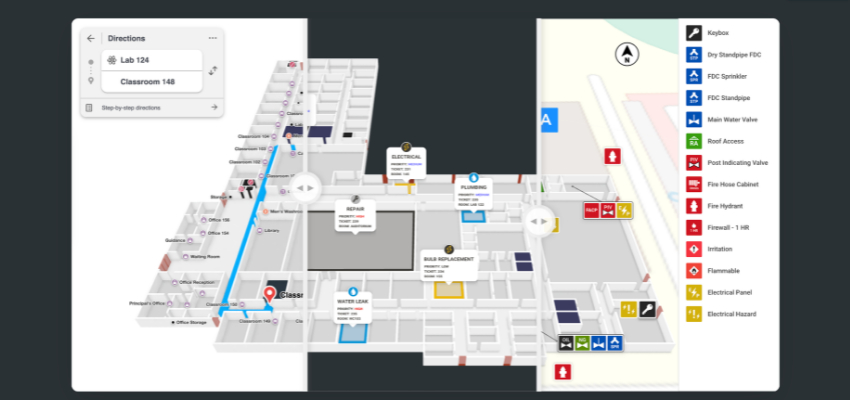Show:
Why More And More Students Go From Classic Design To Web Design
In the dynamic world of design, a significant shift is unfolding. Increasingly, students, whether hailing from traditional design backgrounds or not, are pivoting towards the realm of web design. This transition is easily shown by the increasing number of students who order assignment online to tackle web design related concepts.

The design world is in a state of flux, morphing before our very eyes. It’s a sign of the times, a chameleon-like response to the digital era. In this extensive piece, we delve into a detailed exploration of why more and more students are making the transition from the classic design domain to the electrifying world of web design.
The Evolution of Design Principles
Here’s the cool part – web design still keeps the essence of classic design while giving it a modern twist. Classic design principles like visual hierarchy, typography, color theory, and layout are still very much in play, but with a digital spin.
Ever stumbled upon the concept of visual hierarchy? It’s like the rhythmic dance for your eyeballs as they groove across the canvas. In the wild world of web design, it’s all about making sure folks can take a breezy stroll through a website or an app without tripping over their own shoelaces.
Typography and color theory? They’re just as important but now shape user experiences on digital screens. And responsive design? Making sure that websites are a real stunner and function flawlessly on any gadget, be it a sprawling desktop or a sleek smartphone, is absolutely crucial. It’s a bit like ensuring your website can put on a good show, regardless of the screen it’s dancing on.
Diverse Career Opportunities
In today’s rapidly shifting digital landscape, the magnetic charm of web design lies in its endless array of career prospects. In the boundless frontier of the online universe, there’s a ravenous appetite for skilled web designers. Tech titans, e-commerce powerhouses, digital sorcerers, and a myriad of other businesses are actively scouring the digital landscape for imaginative minds to shape and enrich their online presence.
Web designers bask in the lavish diversity of career options that await them. They can choose to dive headfirst into the dynamic world of web agencies, become integral cogs in in-house design teams, or embark on their odyssey as freelancers charting their own course.
But the journey doesn’t grind to a halt at mere web design; it stretches into the interconnected realms of user experience (UX) and user interface (UI) design. These symbiotic domains continue to mold and reshape the ever-evolving digital landscape, offering a captivating kaleidoscope of opportunities for those audacious enough to embark on this exhilarating voyage.
Challenges and Opportunities
Of course, making the shift from classic design to web design isn’t a walk in the park. Learning coding, mastering languages like HTML, CSS, and JavaScript – it can seem like a mountain to climb, especially if your background is more in the visual arts. But trust me, it’s not as scary as it seems.
Today’s trailblazers wield their creative prowess to fashion not just run-of-the-mill websites, but dynamic, interactive platforms, web applications, and immersive digital experiences. The digital realm, it’s a wild frontier, ripe for daring experiments, a playground where boundaries are pushed to their limits, and imaginative designs spring to life.

Riding the Wave of Industry Trends
Web design isn’t just about aesthetics; it’s about staying up to date with industry trends. g In the ever-evolving realm of web design, the mobile-first design approach takes the limelight, underscoring the star role of smartphones.
It’s the ultimate call to action, demanding that websites adapt, like a chameleon switching colors, to cater to those compact screens. And hey, let’s not forget the intrigue of dark mode design, the tiny yet mighty micro-interactions, and the futuristic voice user interfaces.
These elements are the architects, the blueprint shapers, paving the way to reinvent the very essence of web design. They’re the artists painting the canvas of the digital future, molding it into a masterpiece that’s anything but conventional.
Coding and Development: The Magic Behind the Curtain
The enchantment of web design often happens behind the scenes. It’s in the clean, semantic HTML that structures content. It’s in the CSS that brings style and visual appeal to elements. And it’s in the JavaScript that adds interactivity and functionality to websites.
Content managing thingamajigs (CMS), like WordPress and Drupal, play the cool role of being the nifty bridge that links up design and all that fancy coding stuff. These wizards give designers the fantastic power to whip up dynamic, data-packed websites, all without needing to be coding superheroes. Optimizing websites for performance, security, and accessibility is a silent yet critical part of web design.
Crafting the Perfect Portfolio
Now, if you’re dreaming of being a web designer, you need a strong portfolio. It’s not just a showcase of skills; it’s your canvas for presenting your journey as a designer. More than mastering code, you will get to concoct various combinations of code and exhibit unique ideas that fill your readers with awe.
Optimizing websites for performance, security, and accessibility is an essential yet often unobtrusive aspect of web design. Ensuring that the end product isn’t merely easy on the eyes but functions seamlessly while dancing to the rhythm of industry standards and best practices is a key player in the game.
In Conclusion
In the ever-evolving realm of design, the shift from the old-school ways to the wild world of web design isn’t a frightful plunge into the abyss; it’s a thrilling journey. It’s a path that beckons for a unique set of skills, adaptability, and a fiery passion for the digital canvas. But it isn’t a cake walk; it’s more like a rollercoaster ride full of twists and turns, requiring grit, creativity, and a touch of craziness.
As our chat winds down, it’s worth noting that web design isn’t just a gig; it’s a creative expedition. It’s your golden ticket to sculpt the digital world, forging websites that aren’t only eye-popping but also ultra user-friendly.

 Return to Previous Page
Return to Previous Page








